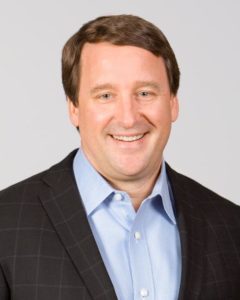On Logistics and 3D printing. Q&A with Alan P. Amling, Vice President, UPS Corporate Strategy
Q1. 3D printing, also known as additive manufacturing (AM): How does it relate to the business of UPS?
In the early days of 3D printing, when the primary use cases were models and prototypes, we thought the technology was interesting. However, as machine and material quality continued to increase, we saw the potential for using 3D printing for industrial production and the opportunity became compelling.
As we looked at how this could play out, we realized that it could be a threat or an opportunity depending on the actions we take today. We acted. UPS in not a manufacturer, so we invested in one, Fast Radius, and integrated their operations into our global logistics network. In Louisville, for instance, we can print until 1 am and get the product anywhere in the U.S. by the next morning. We see 3D Printing as a logistics solution, another tool to help customers eliminate waste, delight customers and optimize their logistics networks. This is not new to UPS. This is what we’ve been doing for 111 years. We just have a new tool to do it.
Q2. What is the On-demand manufacturing strategy of UPS?
The commercial internet has enabled the on-demand consumer and UPS is an integral part of that supply chain.
Industry 4.0 will do the same to manufacturing. We see manufacturing becoming more distributed with products/parts produced on-demand, in smaller quantities, more often, closer to the point of use. This will only apply to a small number of parts and products at first, but will grow over time as additive manufacturing technologies and advancements in materials increase quality while decreasing time and cost.
By integrating on-demand manufacturing into our global logistics network, we’re preparing UPS to be an integral part of the manufacturing ecosystem that will be developing over the next 10 years.
We’re using a “box-in-a-box” strategy to enable this network. The Fast Radius Additive Micro Factory on our Louisville supply chain campus is a great example.
It’s also important to note that our strategy is not focused on what we make, it’s focused on what we make possible.
– How can we help businesses reduce waste and lower inventory by allowing them to store products in virtual inventory and print on demand? 3D printing holds the potential to invert the traditional supply and demand model, where demand actually comes before supply.
– How can we help our customers create new products customized for each individual? Today we accept “best fit” or “close enough”. Tomorrow we’ll be fitting everything from artificial knees to hammer handles to the individual instead of the other way around.
– How can we help a small entrepreneur in Cape Town build, test and sell one of their innovations to customers in New York without the high upfront cost and risk of building a mold or tooling for a product that may have to change several times? We call this manufacturing-as-a-service.
Q3. What are the main advantages of distributed manufacturing?
The big near-term advantage is the ability to meet customer demands while lowering inventory. For our customers, inventory is the devil. If the inventory turns slowly, like you find in critical parts that need to be stored close by for quick repairs, it’s a big financial drain for companies. Storing parts in virtual inventory and printing on-demand is a great alternative. We’re also seeing great demand for personalized application, combining what used to be several parts into one 3d printed part, and creating unique and ultra-efficient designs that simply can’t be manufactured using traditional methods.
Q4. Are there any challenges when deploying distributed manufacturing?
There are big challenges to the mainstream adoption of additive manufacturing. Determining what parts make sense to print, going through the certification process, making sure IP is protected, scaling the solution, and making sure you have engineers on staff that are familiar with the new technology are all “speed bumps” preventing progress. Because we were in the market early and identified these issues, it allowed us with our partners Fast Radius and Carbon to create what we call the Application Launch Program (ALP). We take 2 engineers from 10 non-competing companies in each ALP cohort through a 6 month program with on-site and field work to knock out each of these issues and get to initial production. The progress we’ve seen is very encouraging.
Q5. UPS seems to sit at the intersection of the digital and physical world (digital commerce and physical delivery). Can you please tell us how is on-demand manufacturing allowing UPS to move your position in the supply chain up one notch?
As digital technology shrinks the gap between supply and demand, it’s incumbent upon UPS to reach further up and down the supply chain to drive new efficiencies and opportunities for our customers. While this is a new phase in our evolution, it’s not our first rodeo. The original messenger service that started the company in 1907 was disrupted by an incredible technology…the telephone. It forced us to think differently and reconfigure our assets to find new ways to deliver value which gave birth to our package delivery business and the rest is history. These changes are part of our 111 year history and I’m excited to see how this next phase unfolds.

Alan P. Amling , Vice President, UPS Corporate Strategy